TRPV1 channels are critical brain inflammation detectors and neuropathic pain biomarkers in mice
- PMID: 28489079
- PMCID: PMC5436240
- DOI: 10.1038/ncomms15292
TRPV1 channels are critical brain inflammation detectors and neuropathic pain biomarkers in mice
Abstract
The capsaicin receptor TRPV1 has been widely characterized in the sensory system as a key component of pain and inflammation. A large amount of evidence shows that TRPV1 is also functional in the brain although its role is still debated. Here we report that TRPV1 is highly expressed in microglial cells rather than neurons of the anterior cingulate cortex and other brain areas. We found that stimulation of microglial TRPV1 controls cortical microglia activation per se and indirectly enhances glutamatergic transmission in neurons by promoting extracellular microglial microvesicles shedding. Conversely, in the cortex of mice suffering from neuropathic pain, TRPV1 is also present in neurons affecting their intrinsic electrical properties and synaptic strength. Altogether, these findings identify brain TRPV1 as potential detector of harmful stimuli and a key player of microglia to neuron communication.
Conflict of interest statement
The authors declare no competing financial interests.
Figures
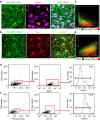
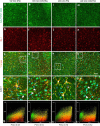
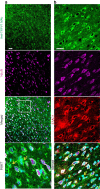
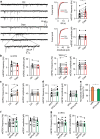
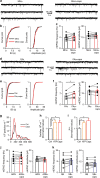
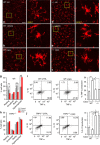
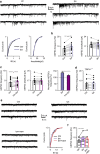
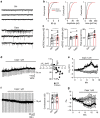
Similar articles
-
Activation of mitochondrial transient receptor potential vanilloid 1 channel contributes to microglial migration.Glia. 2015 Oct;63(10):1870-82. doi: 10.1002/glia.22854. Epub 2015 May 23. Glia. 2015. PMID: 26010461
-
TRPV1 channels facilitate glutamate transmission in the striatum.Mol Cell Neurosci. 2009 Jan;40(1):89-97. doi: 10.1016/j.mcn.2008.09.001. Epub 2008 Sep 30. Mol Cell Neurosci. 2009. PMID: 18930149
-
Pirt Together with TRPV1 Is Involved in the Regulation of Neuropathic Pain.Neural Plast. 2018 Apr 2;2018:4861491. doi: 10.1155/2018/4861491. eCollection 2018. Neural Plast. 2018. PMID: 29808083 Free PMC article.
-
Multifunctional TRPV1 Ion Channels in Physiology and Pathology with Focus on the Brain, Vasculature, and Some Visceral Systems.Biomed Res Int. 2019 May 27;2019:5806321. doi: 10.1155/2019/5806321. eCollection 2019. Biomed Res Int. 2019. PMID: 31263706 Free PMC article. Review.
-
Modulation of neuroinflammation: Role and therapeutic potential of TRPV1 in the neuro-immune axis.Brain Behav Immun. 2017 Aug;64:354-366. doi: 10.1016/j.bbi.2017.03.007. Epub 2017 Mar 22. Brain Behav Immun. 2017. PMID: 28342781 Review.
Cited by
-
Distal Electroacupuncture at the LI4 Acupoint Reduces CFA-Induced Inflammatory Pain via the Brain TRPV1 Signaling Pathway.Int J Mol Sci. 2019 Sep 10;20(18):4471. doi: 10.3390/ijms20184471. Int J Mol Sci. 2019. PMID: 31510092 Free PMC article.
-
TNF Production and Release from Microglia via Extracellular Vesicles: Impact on Brain Functions.Cells. 2020 Sep 23;9(10):2145. doi: 10.3390/cells9102145. Cells. 2020. PMID: 32977412 Free PMC article. Review.
-
Endocannabinoid-Binding Receptors as Drug Targets.Methods Mol Biol. 2023;2576:67-94. doi: 10.1007/978-1-0716-2728-0_6. Methods Mol Biol. 2023. PMID: 36152178
-
Role and Modulation of TRPV1 in Mammalian Spermatozoa: An Updated Review.Int J Mol Sci. 2021 Apr 21;22(9):4306. doi: 10.3390/ijms22094306. Int J Mol Sci. 2021. PMID: 33919147 Free PMC article. Review.
-
Identification of sensory and motor nerve fascicles by immunofluorescence staining after peripheral nerve injury.J Transl Med. 2021 May 13;19(1):207. doi: 10.1186/s12967-021-02871-w. J Transl Med. 2021. PMID: 33985539 Free PMC article.
References
-
- Caterina M. J. et al.. The capsaicin receptor: a heat-activated ion channel in the pain pathway. Nature 389, 816–824 (1997). - PubMed
-
- Szallasi A. & Blumberg P. M. Vanilloid (Capsaicin) receptors and mechanisms. Pharmacol. Rev. 51, 159–212 (1999). - PubMed
-
- Van Der Stelt M. & Di Marzo V. Endovanilloids. Putative endogenous ligands of transient receptor potential vanilloid 1 channels. Eur. J. Biochem. 271, 1827–1834 (2004). - PubMed
Publication types
MeSH terms
Substances
LinkOut - more resources
Full Text Sources
Other Literature Sources
Medical
Molecular Biology Databases

